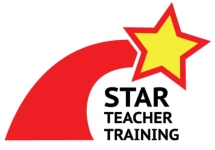Sometimes the simplest activities are among the best. One of these is Two Truths and One Lie. This activity is great for practicing writing and listening skills. It’s also student-centered, flexible, fun, and even low-prep! I always keep this activity in my bag of tricks and it’s come in handy more times than I can count.
How to Play
This game is super-simple to play. One person writes three sentences. Two of them are true and one of them isn’t. They then share those with other people who have to choose which is the lie. That’s it.
The beauty of this game is in all the variations you can do with it.
Teacher-led Introductions
One of my favorites variations is to introduce myself to new classes with this game.
Before the lesson starts I write three level-appropriate sentences about myself. Lower-level students can learn about my age, what country I’m from, or what my favorite food is. For older and more advanced students these can be funny and interesting things that I’ve done in my life.
I usually try to make the lie clear enough so the students can figure it out after they think for a moment. The students then can raise their hands to vote which is false. Some can even stand up to say why they think so.
Related Post: Intro Mind Map
Student to Student
Students can also write their own sentences to share with each other.
Introductions
First, they can write introductions about themselves like in the teacher-led version above. Instead of sharing with the whole class they can read them to a partner or take turns in a small group. Their classmates can then guess which is the lie.

You can later take a volunteer or two to share theirs with the whole class.
Common Knowledge
You can use this format for other topics as well. For example, children can write three sentences about what animals can and can’t do. Their partners or group-mates can then listen to them read and say which isn’t true, such as “Monkeys can fly.”
The same can be done with descriptions; “Tigers are green and blue””, “You can swim at the cinema”, or “We have two eyes and two noses.”
Shared Knowledge
Another option is to create a set of shared knowledge for the students to use together.
For example, you could put up pictures of four or five children wearing different colors and kinds of clothes for everyone to see. Your students could then write three sentences about those children – “Paul is wearing a blue T-shirt and red pants.”

The same would work for school schedules, weather forecasts, food likes and dislikes, describing a messy room or house, sports preferences and more.
The students just need to be given the same set of information. You can do this by putting it on the board, giving them a listening exercise beforehand, having them do a survey, or displaying a picture.
Related Post: Settle and Succeed with Coloring Dictations

Suggestions
Numbered: It helps to number each of the sentences. This helps students identify which one is the lie.
Clear Examples: Students might struggle with the idea of lying at first. Make sure to give a clear example and highlight it well before you ask students to write their own.
It also really helps students to leave an example or two on the board. I often highlight the structures needed to scaffold for weaker students.
Minimax: This game also works great as a low-prep addition to your lessons. Students just need to turn over a handout to a blank side or get out some scrap paper to write on. You don’t need to provide them with any special materials.
Further Two Truths and One Lie Adaptations
This activity can be further adapted to increase repetitions.
Pair Play: Students can share their sentences with a single partner and be finished once both have shared.
Group Play:Another option is for students to work in small groups so they can hear from several classmates.
Mingle: If you have the space, children can also walk around and mingle to share. Or you could put them in to lines and then rotate so everyone has a new partner.
Competition: One of my favorites is to combine Two Truths and One Lie with Speed Speak and even a Board Game. Students can play in small groups after they’ve already shared their sentences together. To play, one student reads out one of their sentences and the others listen and then say either “true” or “false.” The fastest student to speak correctly gets to go next.
Two Truths and One Lie is a great activity for students in Grade 3 (8 to 9 years old) and above. You can use it for between 5 and 15 minutes.
Give it a try and let me know how it goes in the comments below. What topics have you used this activity for?






